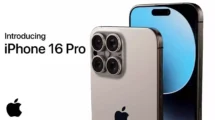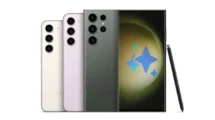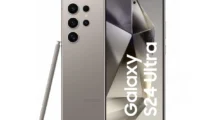NextBit is a US-based manufacturer who’ve launched their first smartphone in India – the Nextbit Robin. It looks lovely, and the phone’s unconventional color scheme certainly makes it stand out in a sea of black, gray or for that matter rose gold rectangular slabs. Besides its rather unique looks, Robin’s USP is the 100GB of free lifetime cloud storage – that’s baked into the phone’s OS itself. Nextbit claims the Robin never runs out of storage. In fact, the phone not only backs up photos but even apps to the cloud.
It’s no slouch when it comes to hardware as well, with a full HD display, a hexacore Snapdragon 808 processor with 3GB of RAM and 32GB of built-in storage.
Nextbit Robin Price in India on Flipkart
Nextbit Robin is Priced at Rs. 19,999, has it got enough to lure the brand and price conscious Indian buyer. Let’s find out?
Box Contents:
- NextBit Robin
- USB Type-C cable
- SIM ejector PIN
- User manual
Design
The NextBit Robin is not your usual grey or black rectangular slab. It looks and feels different with its refreshing mint and white color scheme. The outer body is built out of plastic, but it still manages to give the phone that quirky look and feel. Every design element on the Robin makes it stand out from the crowd.
From the dual circular front facing speakers to the power button on the right (which also doubles as a fingerprint sensor), and volume rockers on the left edge – the phone triggers curiosity – and in a right way. While the back features a cloud symbol with a few LED notifications lights below it, something we’ve never seen before.
It rocks a rectangular boxy look, with clean lines and rather sharp edges. There are no gentle curves here or the use of any metal, yet it manages to give that minimal and intriguing look and feel. It’s lightweight, fits nicely in the palm and easy to carry around. While some may call it a box-shaped abomination, I really respect the company’s attempt to make something different and off-beat.
Hardware and Performance
The phone comes with a 5.2-inch Full HD IPS LCD with Corning Gorilla Glass 4 protection. It’s not as bright and vibrant compared to other smartphones in the price range, though gets the job done unless you’re very finicky about displays. For instance, it’s a bit reflective, and loses a lot of visibility if you view it at odd angles, but from the front, it looks great.
Powering the smartphone is a Snapdragon 808 hexacore processor bundled with Adreno 418 GPU and 3GB of RAM. The device is well-equipped to handle your routine daily usage at ease. Multitasking is quite a breeze without any lags or stutters. Navigating around the phone’s UI feels pretty smooth and for everyday usage, the NextBit Robin handles everything at ease.
I was also impressed with the phone’s ability to handle high-end games. My experience while playing Mortal Kombat X on the phone was outstanding. The overall gameplay experience was rather smooth, and phone’s ability to keep up with the frame data for graphically intensive titles is rather impressive. Though it does get warm while playing games, or during heavy multitasking.
As far as synthetic benchmarks scores are concerned, the phone racked up an impressive 69056 points in Antutu. While in GeekBench 3, the device managed to pull-off single and multi-core scores of 1209 and 3345 respectively.
The Robin comes with Android Marshmallow straight out of the box and features the NextBit UI on top. The interface, however, lacks the conventional app drawer. There is also an icon on the bottom right which is always there. It essentially allows you to pin apps and gives access to your entire collection of apps, but comes across a tad confusing. Robin also has a bizarre way of handling widgets. Rather than having them sit on the home screen, you get a second set of screens just for widgets, which you can get to by zooming in and out on the Home Screen.
Besides the lack of an app drawer and some baffling interface choices, navigating around the phone’s UI feels pretty smooth.
Overall, the Nextbit Robin delivers more than satisfactory performance when it comes to regular and heavy usage. Multitasking is smooth, and the phone is well-equipped to handle heavy usage, barring the phone’s tendency to get warm during heavy usage.
Juicing up the device is a 2680 mAh battery which lasts an entire day of normal usage. Though drains very fast while playing games or watching HD videos. You’ll need a power bank here as the battery onboard isn’t going to last you long, more so for a heavy user. The Robin also supports Quick Charge 2.0 which is good. However, you’ll have to spend some extra bucks as the phone doesn’t come bundled with a wall charger.
Call quality is good for both incoming as well as outgoing calls. And thanks to the use of plastic, the phone is good at detecting and latching onto nearby Wi-Fi networks. Other connectivity options on the phone include GSM, HSPA, LTE, Bluetooth, and NFC.
Cloud Storage
The NextBit Robin offers 100GB of free cloud storage, which is not just for photos; it allows you to backup apps as well. It’s a smart storage of sorts. As the phone can detect apps that you don’t use on a frequent basis, and smartly back them up on cloud storage, which eventually creates more free space on the phone. App icons backed up on cloud appear in grey, which signifies that the particular app is safely backed-up on the cloud. Tapping on the grey icons will immediately bring them back from the cloud onto the phone’s storage, provided you have a reliable internet connection.
You also get the option to select apps that you don’t want to get automatically backed up on cloud, by ‘pinning’ a particular app. It gives you the option to pin apps that you want at all times and prevents them from being automatically uploaded to cloud storage. While the four LEDs housed on the back, signify backups in progress and the amount of cloud storage remaining.
Though as of now, you can only backup files and apps on Cloud storage, not videos. Quite a bummer, given the fact that these are the files that consume the maximum storage. Hopefully, the company can fix the issue with upcoming updates.
Camera
Optics on the NextBit Robin include a 13MP rear camera along with a 5MP front-facing shooter. The 13MP rear shooter belts out pretty decent pictures, though nothing outstanding. Pictures taken in well-let conditions turned out to be quite good, with crisp and sharp details. But the device clearly struggles in low-light conditions, as noise levels and haziness start creeping in.
The device is also capable of shooting 4K and Full HD videos, which turn out to be fairly good in bright outdoor settings. However, the lack of an image stabilizer is clearly evident while shooting videos in motion or during sudden hand movement.
The 5MP camera on the front also does an acceptable job. In ideal conditions, selfies turn out reasonably good, with fairly accurate colors and a reasonable amount of detail.
Overall, the camera performance is quite satisfactory. That said, the Rs. 20,000 asking price leaves a lot to be desired from the phone’s camera.
Pros:
- Conceptually great
- Refreshing design and color scheme
- 100GB of smart storage
- Good all round performer
Cons:
- Reflective display
- Tendency to get warm
- Smart storage still lacks practicality
- Overpriced for the Indian market
- No bundled wall charger
Wrap Up
NextBit Robin is apparently the first device to dabble into the cloud storage space. It’s a smartphone that gives you a reassuring feeling that you will never run out of storage – anytime, anywhere. All of that is good, but I do have a few concerns. First off, it doesn’t allow users to backup videos and documents, which apparently hog more space than photos and apps. For me, this kind of defeats the whole concept of being touted as a phone that gives users’ a lot of storage at their disposal.
Second, it can be quite a hassle to retrieve apps backed up on cloud storage. You’ll need to do it over a Wi-Fi, as doing so on your mobile network will certainly send your monthly data limit down the drain. Moreover, it’s still quite a mystery as to how you’ll recover the data stored on the cloud in case you lose the smartphone, or if you’re planning to switch devices. Finally, you also won’t have the same kind of access to your files as you would if it were locally stored.
The smart storage solution currently doesn’t seem to offer much when it comes to practicality, though how the concept pans out in the future is yet to be seen. And at Rs. 19,999, the NextBit Robin feels overpriced, given the onslaught of budget smartphones from Chinese and domestic manufacturers that come with the same spec sheet, at a much lower price point.
That said, the Robin is one interesting take on smartphones and certainly breaks the norm with its hipster-like design and smart storage solution. Barring some rather clunky interface choices along with its camera and battery performance which could have been a notch higher, it’s a pretty good device when it comes to everyday usage. It certainly has the potential to attract a huge chunk of Android smartphone users.
The NextBit is a great attempt by the company to offer something different, though the concept its seems, is not yet ready for the mainstream market. Hopefully, after Robin, the company unleashes the Batman upon us – with more refinements, addressing the minor flaws of the Robin.




